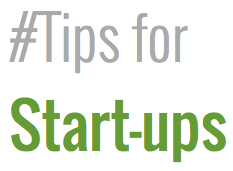 I’m a people person. I’m happiest when I’m with people. So, the idea of building a team is really exciting. And it is exciting! It also hurts my brain sometimes. I’ve been building my team since last summer and have learned a lot — fast. I’ve learned that there will always be risk involved when building a team. It takes commitment and trust. The fact is there are and will be elements beyond your control.
I’m a people person. I’m happiest when I’m with people. So, the idea of building a team is really exciting. And it is exciting! It also hurts my brain sometimes. I’ve been building my team since last summer and have learned a lot — fast. I’ve learned that there will always be risk involved when building a team. It takes commitment and trust. The fact is there are and will be elements beyond your control.
In building a team, I’ve wrestled with questions and some I have yet to answer:
- Is this person truly the best fit for our agency?
- Will top-notch talent want to be a part of a virtual agency or will it freak them out?
- How can I build an environment that encourages team members to engage, give their best, challenge each other and ultimately thrive?
- How can we retain star team members and keep them fulfilled?
- How much work is too much and how much time should I expect from my team?
- How can I get team members to engage with each other and build trust as a virtual agency?
- What qualities should a star team member possess?
Startup Lessons: How to Create Positive Onboarding Experience
Some of these questions have been answered through trial and error. Others I’ve crowd-sourced or read about and am still learning as I go. Of course, I could write multiple posts on this topic (and most likely will) but for now I’d like to share three approaches that have helped to create a positive onboarding experience.
Allocate Time to Onboard … Then Double It.
You have to allocate time to train and then double that time estimate to account for follow up questions and project reviews. I’ve seen companies onboard new team members poorly in that they do not allow adequate time for questions or an environment that truly encourages learning by making new team members feel comfortable. Seeing those poor examples early on helped me understand the value of making time to properly onboard new team members.
When I first began building a team, I didn’t fully understand the time commitment involved in training someone. I found that even if the new team member was above entry level, they still needed time to acclimate, learn, ask questions, obtain feedback and regroup.
Calculate how long you think it will take to properly train a team member and double that estimate.
I’ve found it’s extremely helpful to have time left over rather than to squeeze training and feedback into an already tight schedule. Not allowing enough time properly train a new team member can result in stress for all parties involved, a lack of trust within your team and ultimately a poor experience.
Uncover Learning Style Early On to Enhance Onboarding.
I’m a visual learner. I see it and I remember it. I understand not everyone is like me. I’ve found that it greatly enhances the onboarding and long-term experience of our team members to understand how they learn best. This can be uncovered within your interview process, or as you onboard, and does not have to involve a complex test.
Simply inquire within early conversations how your new team member prefers to receive communication: Voice-to-voice? Face-to-face? Email? Do they prefer to write things down or have a manual as a point of reference?
Now, you cannot always accommodate variances in learning style throughout each day or within each project, however, knowing the different styles helps communication and expectations across the board.
Work to Keep the Dialogue Open
Lastly, know that you must be diligent to keep communication open and flowing. It takes work. It can feel messy and awkward at first but just like relationships in general, you get what you give. It’s important to ask questions one-to-one with your team and communicate within groups. According to the Harvard Business Review, Netflix doesn’t practice formal reviews for their team members. Instead, they communicate a culture of continual feedback through peer-to-peer dialogue and leader input. I love that idea! We do this within weekly team and individual touch points and it helps alleviate awkward or stressful conversations.
What tips can you share for onboarding new team members? What have you seen that works? What doesn’t?



